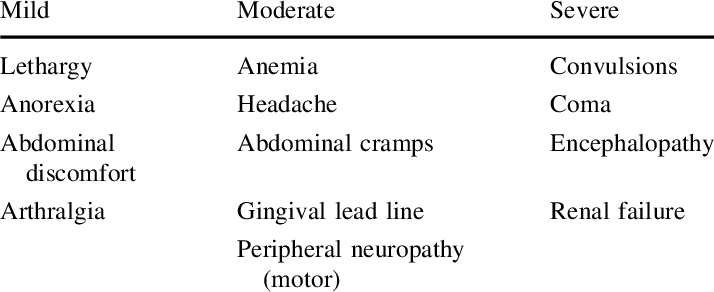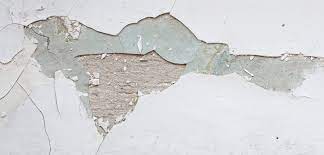Do you really need to remove all lead paint on your home or property? Think again.
Just because you found lead-based paint on your home or property does not mean that you have to spend thousands of dollars to remove the risk of lead poisoning.
Although some painting service contractors may assume any and all surfaces with lead-based paint must be removed, that is not always the best strategy.
This guide summarises some tips, strategies, and options for you to make an informed decision.
But, first of all, here’s why you must take action.
Why Lead Poisoning is an Issue

Before you decide on doing something about lead paint poisons on your walls or ceilings, let’s review why it’s necessary to do something in the first place.
Everyone seems to stress out about lead paint poisoning, but some are not clear why that is so. Here’s a summary of what we know:

- Lead stays in the blood for months and in the bone for decades.
- Lead poisoning is due to many small exposures over weeks or years.
- The most critical effects are the brain and nervous system.
- High levels of lead exposure can disable or kill.
- Lead poisoning can damage the blood, kidneys, digestive system, reproductive system, and other organs.

- Inhaling or swallowing even a little lead is toxic and can damage hearing, ability to learn, and physical movements.
- Children commonly put everything in their mouths: hands, toys, dust, chips, and so on.
- Adults can also be affected by lead poisoning from the air, the soil, and from work.
- Even very low levels of lead can affect unborn children.

- Common symptoms of lead poisoning include ADHD, insomnia, and abnormal behaviour.
- If detected early, lead poisoning can be treated, that’s why blood tests are very important.
- In extreme cases, chelation therapy may help remove lead from the blood.
Is there a need to remove all lead paint?
The short answer is: no, that’s not always necessary. Here are some reasons why.
- Removing lead paint can be an invasive, destructive, and expensive way to address the risk of lead poisoning.
- Removing lead paint can create great amounts of lead dust in the air and contaminate external environments (soil, water, plants, livestock) as well as interior elements (furniture, crevices, floors, and so on).
- Other ways are not as dangerous or expensive. For example:


First of all, a good paint job can last for more than 10 years, particularly if it is not exposed to damaging elements such as moisture, heat and cold, direct sunlight, as well as movement or friction.
b) Paint damage is specific


Third, lead paint only needs to be removed when it’s cracking, peeling, or turning to dust.
In short, as long as the paint is in good condition, sticking to the surface well, and not deteriorating in any way, then removal is optional.

While the lead-based paint on your property is still good – and it’s best to get a professional paint inspector to confirm that – you can cover it up with an encapsulant.
Nope, ordinary paint won’t do. Email me if you want to know more about this.
You can also lead paint in good condition with safer materials such as new mortar, brick, lath and plaster, wainscoting, drywall, wood veneer, or wall panels.

For the safest material that suits your budget and needs, ask a professional interior decorator, lead paint specialist, or a local painting service provider for possible options.
And while you’re at it, why not ask for a free estimate? It’s a proactive way to establish a relationship. You’ll never know when you might need it.
What’s an encapsulant?

Simply put, an encapsulant is either a liquid or an adhesive that is applied to cover lead-based paint.
The purpose is to seal the paint to the surface and prevent the release of paint chips or dust into the air.
Encapsulants are used to enclose or cover lead paint so that the paint cannot produce dangerous dust or chips, as well as prevent human contact.
- Use encapsulants only on clean and dry solid surfaces.
- Do not use encapsulants on surfaces that rub together (doors, windows), where people walk, and on surfaces that are badly deteriorated.
Before you decide on using an encapsulant, here are some key points to know:
- Encapsulantmanufacturerguidelines and standards for testing, preparation, and application should be strictly followed.
- Encapsulants offer permanent protection from lead-based paint. However, if they’re damaged, that protection is gone.
- Not all encapsulants are the same. Different situations require different encapsulants. Always follow product label instructions.
- If you prefer a permanent solution that does not require regular inspection or periodic maintenance, do not choose the encapsulant approach.

Encapsulants are best used on some types of surfaces. Here’s what you need to know:
- Test for dryness: The surface should be dry without any grease, moisture, dampness, humidity, mildew, or leaks.
- Test for cleanliness: The surface should be clean with no dust, grime, dirt, grease, charring, smoke residue or other contaminants.
- Remove gloss: Before encapsulating high gloss surfaces, use wet sanding or chemical de-glossers (gloss removers) for best results.
- Repair damage: The surface should be architecturally sound and without damage, holes, or large cracks. Always complete repairs before encapsulating.

Encapsulants are not effective when used on some surfaces. Here’s what you need to know:
- Jut-outs: Do not encapsulate any high-profile surfaces such as protruding window sills, trims, and carvings regardless of condition.
- High-friction surfaces:
- Do not encapsulate drawers, close-fitting doors, and window jambs, glides, headers, stops, or parting beads.
- High-use areas: Likewise, frequently cleaned surfaces and rooms, high-use hallways, stair treads, and thresholds should not be encapsulated.

- Cheaper and faster: Encapsulating lead paint can cost less and can be faster than other methods of addressing the risks of lead paint poisoning.
- Minimum disturbance: If the processes of surface preparation and encapsulation do not release any dust, there is no need to ask residents to leave the building.
- No prep work:
- If a surface that is painted with lead-based paint is in good condition and without any damage, an encapsulant can be applied without the need for any surface preparation. Professional inspection and verification are required.

- Pre-testing required: Before using any encapsulant, it should be tested on-site.
- Evacuation required: Occupants should never be in the immediate work area (i.e., same room) during application.
- Regular inspection required: Periodic inspection for repair or maintenance is necessary.
- Untested over time: It’s a relatively new product, so we don’t know how encapsulants perform over long periods.
- Dryness required: Encapsulants can be damaged by water from roof leaks or broken pipes or by moisture from steam or heated water including sweat and moisture.
- Weather requirements: Encapsulants cannot work when applied beyond the specified air temperature and humidity.
- Isolation required: Encapsulants are not recommended for areas that are often touched, cleaned, stepped on, walked on, abraded, or in constant friction. Encapsulants wear thin or wear out due to repeated impacts such as door stops, window stops, and stair treads.
- Prep work required: Encapsulants will peel off from improperly prepared surfaces and on surfaces with old undercoats of paint.
Takeaways

Those who find lead paint on their home or property may feel dismayed by the thought of spending thousands of dollars for safety from lead paint poisoning.
- The health risks of exposure to lead paint are serious. However, you have several options to keep everyone safe – and you don’t have to spend unnecessarily. Before you decide on lead paint removal, ask us to visit and provide you with a free estimate of the different options available to you.
- Keep in mind that removing lead paint is not always necessary. If it is, you have other options. If you need a more flexible payment scheme that fits your school budget, let us know.
- Remember that paint may damage health indoors and outdoors; let us know if you have concerns about that. For best results, choose an insured painting business with a portfolio of completed projects and see what others say about their work.
While this article cites relevant research and regulations, only an experienced homeowner or building manager can fully appreciate the wide range of issues and challenges that face a lead paint problem.
But no worries. Surepaint is always ready for you.
Surepaint
22/47 Park Road, Milton
Brisbane Queensland 4064
0449 846 744



